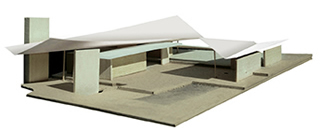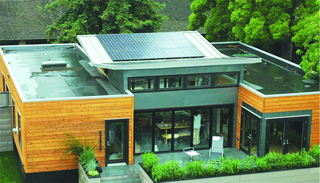Return of the Butterflies - Page 2
 |
|
|
 |
|
|
 |
|
|
 |
|
|
Are the roofs popular because their lightweight look provides an illusion that the home they’re attached to may soon be airborne? Are they a mere aesthetic gimmick?
Or do those two wings outstretched to the heavens serve mankind in a way no other roof form could?
It is interesting to note that the pedigree of the butterfly roof is a distinguished one, linked to some of the most important figures of the Modern Movement in architecture, men dedicated in the main to the proposition that architectural features should be functional, not purely decorative.
Butterfly roofs are newly popular for several reasons: their utility, their inherent beauty, their retro appeal. Few features of a home shout ‘modern’ as loudly as a pair of butterfly wings.
“The butterfly roof is so iconic,” Gemma Noland said, explaining her love for her Krisel-designed mid-1950s home in the San Fernando Valley.
How iconic?
“It’s so iconic,” Krisel said, “a company that makes gingerbread houses also makes a gingerbread butterfly roof. It’s so iconic that a company makes custom-made doghouses with butterfly roofs. For people who tend to like modern, the butterfly roof is iconic. This is modern.”
Which is not to say everyone loves butterflies.
Krisel, who, starting in the mid-1950s, designed between 400 to 500 butterfly-roofed homes, mostly in Palm Springs and the San Fernando Valley, but also in the San Diego and Las Vegas areas, noted that the design made up a small fraction of the 40,000 housing units he designed in his career.
“It didn’t look like a house, some people thought,” Krisel remembered. “For most traditionally minded people a house has a gable roof. If they want to get modern, they’ll go for a flat roof with higher or lower sections of ceiling,” rather than the more outré butterfly.
And today, some people regard the butterfly roof as more flash than substance. Back in 2006, Dennis Cunningham of the firm Palm Spring Modern Homes, building what he called “new modern” homes in the desert, discussed his design philosophy.
“We don’t do Googie,” he said. “We do a pretty conservative modern. We’re not into the flash. We don’t do butterfly roofs.”
Although some of the resurgence of interest in butterfly roofs flows from retro nostalgia, the motivation for the more serious architects and clients is function, married to aesthetics.




